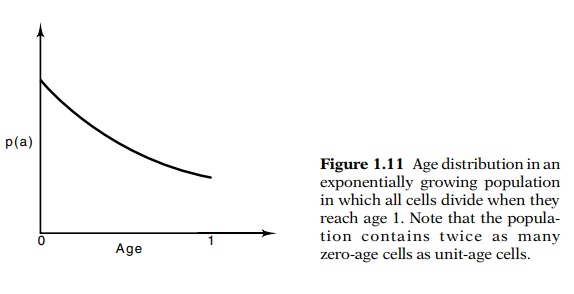Chapter: Genetics and Molecular Biology: An Overview of Cell Structure and Function
Age Distribution in Populations of Growing Cell
Age Distribution in Populations of Growing Cell
The cells in a population of freely growing cells
are not all alike. A newly divided cell grows, doubles in volume, and divides
into two daughter

Consequently, freely growing populations contain twice as many cells that have
just divided as cells about to divide. The distribution of cell ages present in
growing populations is an important consideration in a number of molecular
biology experiments. Therefore we will derive the distribution of ages present
in such populations.
Consider
an idealized case where cells grow until they reach the age of 1, at which time
they divide. In reality most cells do not divide at exactly this age, but the
ages at which cell division occurs cluster around a peak. To derive the age
distribution, let N(a,t)da be the
number of cells with age between aand
a + da at time t. For convenience, we omit writing the da. Since the number of cells of age a at time t must be the
same as the number of zero-age cells at time t-a, N(a,t) = N(0,t -a).
Since the numbers of cells at any age are growing exponentially, N(0,t) = N(0,0)eµt, and N(a,t) = N(0,t-a) = N(0,t)e-µa.
Therefore the probability that a cell is of age a, p(a), is p(0)e-µa= p(0)2-a/Td (Fig. 1.11).
Related Topics